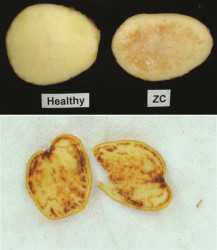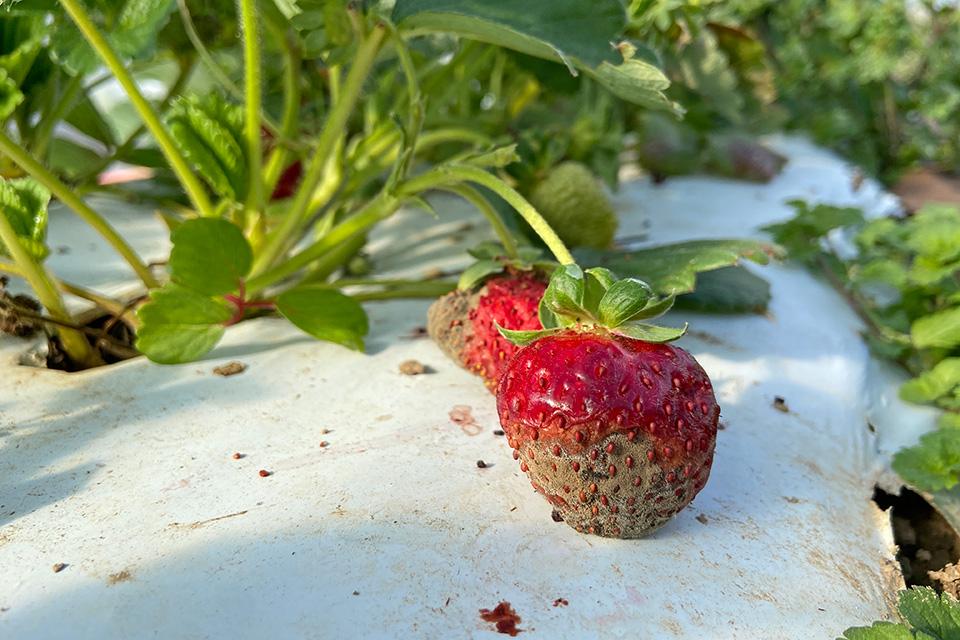Zebra Chip Pressure This Season

“May you live in interesting times.” An ancient curse attributed to the Chinese, this seems a very appropriate description for the current situation in the U.S. potato industry. By now most people associated with potatoes in the U.S. have heard of the new zebra complex (ZC) or zebra chip disease which first appeared in this country in chipping potato fields in Texas back around 2000 or so.
Since that time, growers in Texas and other nearby states have had to deal with the disease at some level every year. What’s totally new is that at the end of last season, in late August, the disease was identified in tubers harvested in the Columbia Basin production area of Washington/Oregon. In early September positive tubers were also found in Central Idaho.
ZC foliar symptoms include scorching of the leaf margins, leaf rolling or curling, pink to purplish discoloration, yellowing, swollen nodes, a proliferation of auxiliary buds, the formation of aerial tubers and stunting (See Figure 1). The disease is caused by a bacterium (Liberibacter solanacearum) that is vectored by tiny insects called potato/tomato psyllids (See Figure 2). Symptoms in the above ground portion of the plant are only part of the story, however, because it is the tuber symptoms that are the most striking and arguably the most destructive feature of ZC.
Infection by the bacterium causes the occurrence of brownish bands within the tuber alternating with other zones that appear normal. Infection also alters the starch metabolism of the tuber, leading to the conversion of starch into reducing sugars in various zones within the tuber. When tubers that have these defects are fried during the production of chips or fries, the reducing sugars turn dark, resulting in alternating bands of light and dark that give the finished product a striped look, hence the name zebra chip or zebra complex.
An Unwelcome Surprise
The discovery of ZC symptoms in tubers harvested in the Pacific Northwest (PNW) production areas came as a rude surprise to most of us. Ten years of research and experience with the disease had more or less lulled us all into thinking that the disease was a sort of south central U.S., warm-climate disease and that those of us in the more temperate PNW production regions had nothing to worry about. Most of the damage remained relatively light last season with very few producers suffering more than 1% to 2% damage, but there were a few cases where the damage exceeded 10%. The fairly widespread but relatively minor damage observed could be an indication that insects carrying the disease invaded the PNW late last season.
Scientists in the PNW have been keeping an eye out since the beginning of the season for the psyllid vector with a network of yellow sticky traps and other scouting methods deployed throughout the region. Unfortunately, psyllids were found much earlier than expected. Worse, some of the captured psyllids tested positive for the ZC bacterium. Management programs have been implemented and we expect them to be effective, but in many ways this really will be a sort of “wait and see” type of season.
With a lack of information about when the insects typically make their first appearance and no information at all on the occurrence of the bacterium in the vector from past years, we don’t know if this is a typical year or the beginning of a totally new era in Western potato production. The potato industry in the PNW is understandably concerned. Interesting times indeed!
For more information, visit the ZC website http://zebrachipscri.tamu.edu/. The photos for this article are being used with permission from the ZC Specialty Crop Research Initiative project.










